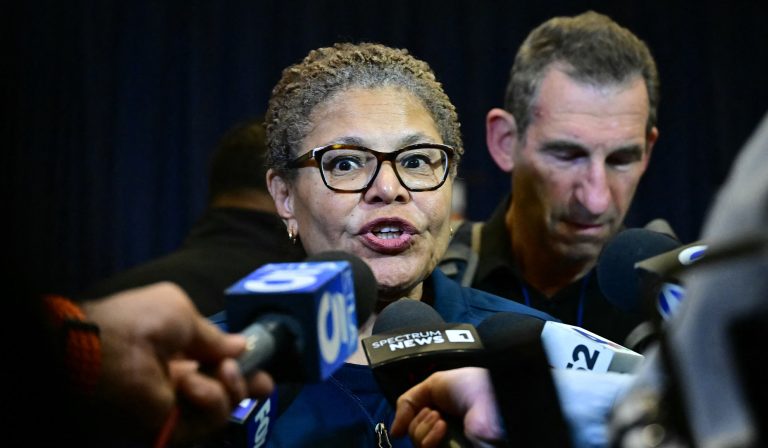When It Comes to the California Fires, the ‘Misinformation’ Is Coming from Inside the House
California’s wildfire seasons have become increasingly devastating in recent years, leaving a trail of destruction, displacement, and economic hardship. As communities grapple with the aftermath of these infernos, a disconcerting pattern has emerged: the dissemination of misinformation surrounding the causes and solutions to these catastrophic events. While some might anticipate this misinformation to originate from external sources, a closer examination reveals a troubling source – government agencies and officials themselves. This "inside job" misinformation campaign, often cloaked in the language of climate change activism, obscures crucial factors contributing to the fires’ ferocity and hinders the implementation of effective prevention and mitigation strategies.
The dominant narrative, frequently propagated by state officials and amplified by mainstream media, centers almost exclusively on climate change as the primary driver of California’s wildfire crisis. This oversimplified explanation, while acknowledging the undeniable influence of a changing climate, neglects a complex interplay of contributing factors, including decades of misguided forest management practices, increasing human encroachment into wildland-urban interface areas, and the state’s unique susceptibility to dry, windy conditions. By fixating solely on climate change, these narratives inadvertently create a sense of fatalism, suggesting that these disasters are inevitable and beyond human control. This not only disempowers communities seeking solutions but also diverts attention from critical policy changes needed to mitigate fire risk.
A closer examination of California’s forest management history reveals a legacy of fire suppression policies that have inadvertently created a tinderbox-like environment. For decades, the strategy of aggressively extinguishing all wildfires, regardless of size or location, has disrupted the natural fire cycle. This has led to an unnatural accumulation of dense underbrush and deadwood, creating a massive fuel load that exacerbates fire intensity and spread when ignition does occur. While recognizing the need to protect lives and property adjacent to wilderness areas, a complete suppression strategy only postpones and intensifies inevitable fire events. Instead of acknowledging this complex history and its contribution to the current crisis, many officials continue to promote a simplified narrative focused on climate change, thereby obscuring the need for a more comprehensive and nuanced approach to forest management.
Further compounding the issue is the increasing human presence in the wildland-urban interface (WUI), the zone where human development meets undeveloped wildland vegetation. As populations grow and development expands into fire-prone areas, the risks of ignition and the potential for catastrophic losses increase exponentially. Factors such as poorly maintained power lines, human-caused accidental ignitions, and the sheer proximity of homes to flammable vegetation contribute significantly to the wildfire problem. However, these critical considerations are often downplayed in official pronouncements, which tend to focus heavily on the climate change narrative while overlooking the role of development patterns and land-use policies in exacerbating the crisis.
The state’s susceptibility to dry, windy conditions, known as "Diablo winds" in Northern California and "Santa Ana winds" in the South, further complicates the wildfire equation. These strong, dry winds, which typically occur in the fall and winter months, can rapidly spread flames across vast landscapes, creating extremely challenging conditions for firefighters. While these weather patterns are not solely a product of climate change, the narrative often conflates the two, suggesting that climate change is directly responsible for the increased frequency and intensity of these wind events. This blurring of the lines obscures the need for specific mitigation strategies, such as improved building codes in high-risk areas, community-wide preparedness plans, and enhanced early warning systems, that are essential to mitigating the impact of these predictable weather events.
The consequences of this misinformation campaign extend far beyond mere misrepresentation. By downplaying the role of other critical factors, the dominant narrative hinders the implementation of effective and comprehensive solutions. Focusing solely on climate change, a global phenomenon requiring global action, distracts from the immediate actions needed at the state and local levels to mitigate fire risks. These include implementing controlled burns to reduce fuel load, promoting fire-resistant landscaping practices in the WUI, updating building codes to enhance fire resistance, and improving early detection and suppression capabilities. By acknowledging the complex interplay of factors contributing to California’s wildfire crisis, and moving beyond the simplistic climate change narrative, policymakers can pave the way for more effective and targeted solutions that will protect communities and ecosystems alike. Ignoring the "misinformation from inside the house" will only perpetuate the cycle of destruction and hinder the state’s ability to adapt to the growing threat of wildfires.


